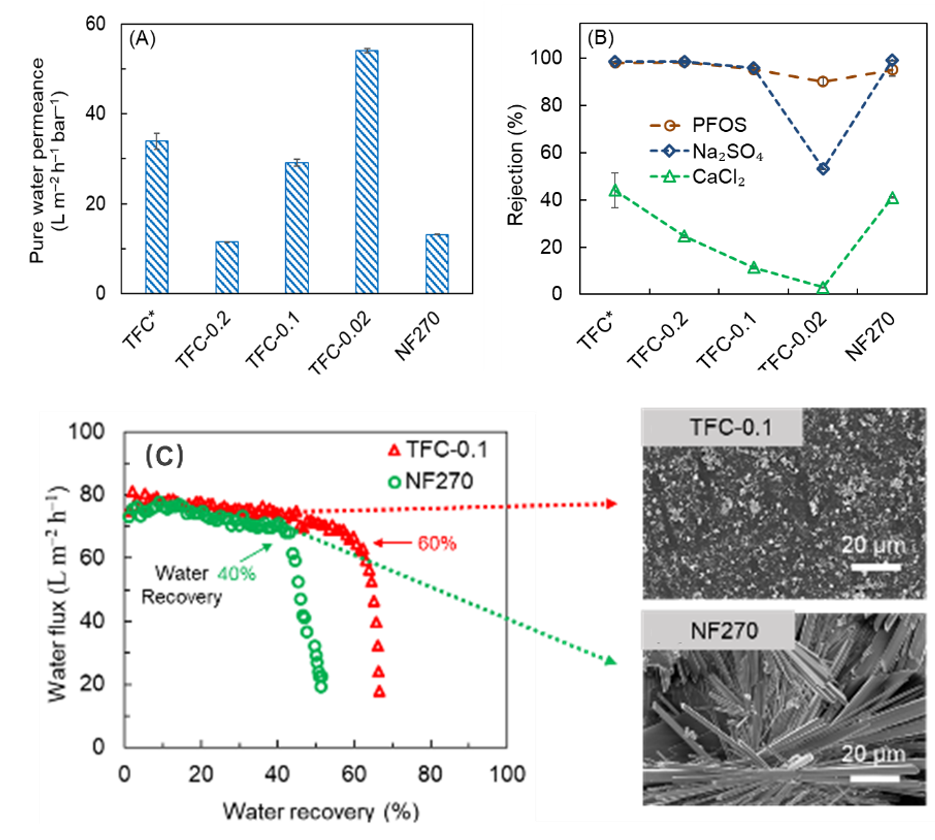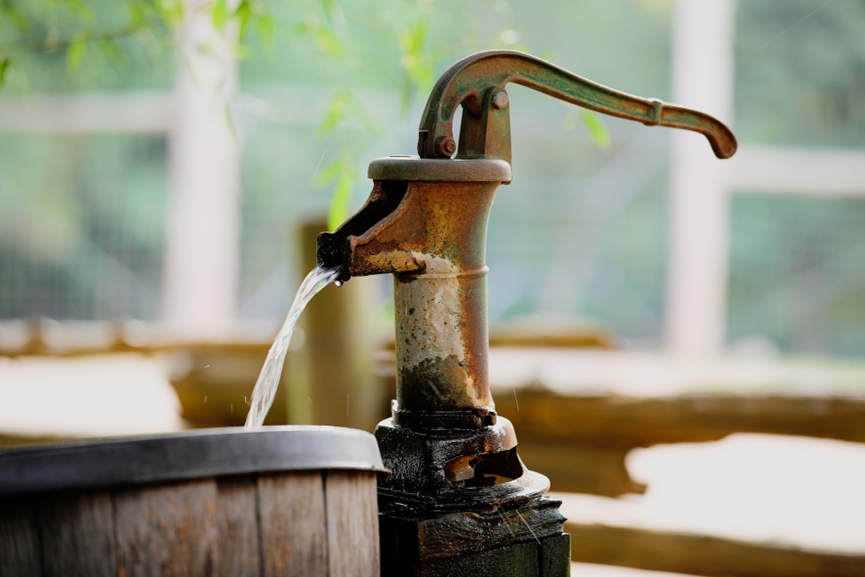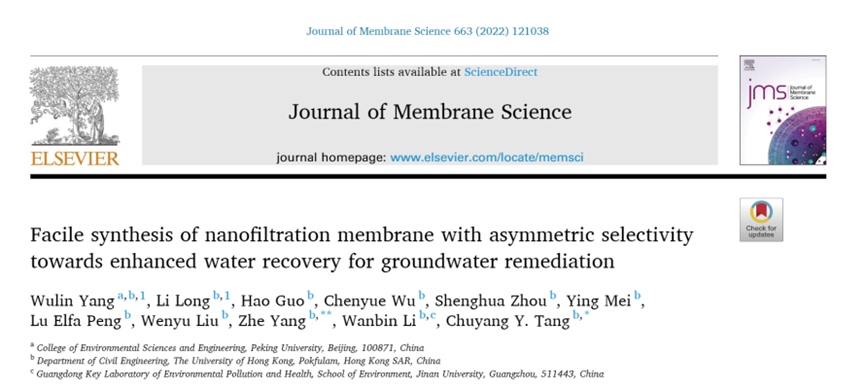Photo: Unsplash
Peking University, November 22, 2022: Groundwater contamination by emerging pollutants has drawn great concerns in recent years. Emerging contaminants such as perfluoroalkyl substances (PFASs), especially perfluorooctanesulfonate (PFOS), were found widespread and persistent in groundwater systems due to their high chemical resistance to environmental degradation processes. Nanofiltration (NF) has been applied as an effective separation technology to remove PFOS from groundwater. Despite the high removal efficiency of PFOS, scaling of NF membranes limits the water recovery during remediation. Furthermore, groundwater usually contains high levels of divalent ions such as calcium, magnesium, and sulfate that are often well rejected by conventional NF membranes (see Fig. 1A). This will lead to severe membrane scaling (e.g., by calcium sulfate dihydrate, gypsum) and deplete the mineral content of the treated water, which further convert the water more corrosive and less suitable for drinking purposes.
Figure 1. Schematic diagrams of (A) concurrent rejections of Ca2+, SO42– and PFOS with severe membrane scaling and (B) asymmetric rejections of Ca2+, SO42– and PFOS with reduced membrane scaling.
To overcome the selectivity limitation of conventional NF membranes, a team from the College of Environmental Sciences and Engineering (CESE) of Peking University found a simple NaOH-promoted interfacial polymerization strategy that was proposed to tailor the membrane asymmetric selectivity of calcium over sulfate ions to reduce scaling potential towards high water recovery. The calcium can freely pass through the asymmetrically selective membrane while sulfate and PFOS are adequately removed (Fig. 1B). This promoted interfacial polymerization reduced polyamide defects for better rejection and enabled the use of lower PIP concentrations. Enhanced hydrolysis of polyamide layer created a more negatively charged surface with larger pore sizes to achieve asymmetrical selectivity together with enhanced permeability. The water permeability was 2.1 times of that for commercial NF270 membrane, while exhibiting comparable perfluorooctanesulfonic acid rejections (>95%) (Fig. 2A and 2B). This membrane also achieved ~50% more water recovery than that for NF270 membrane under simulated gypsum scaling condition, owing to the selective passage of calcium (low rejection of 11.4 ± 0.6%) (Fig. 2C). The exemplified strategy of NaOH-promoted interfacial polymerization is facile and readily scalable, which demonstrated strong potential towards high water recovery in groundwater remediation contaminated by emerging pollutants.

Figure 2. (A) Pure water permeance, (B) Na2SO4, CaCl2 and PFOS rejections, (C) Water flux decline curves for TFC–0.1 and NF270 membranes during scaling tests at different recoveries.
The study has been recently published online by the
Journal of Membrane Science with the title “Facile synthesis of nanofiltration membrane with asymmetric selectivity towards enhanced water recovery for groundwater remediation” (
https://doi.org/10.1016/j.memsci.2022.121038). The first author of the paper is
Yang Wulin, an assistant professor at the College of Environmental Sciences and Engineering of Peking University. This project is mainly supported by the National Key Research and Development Program of China (Grant No. 2021YFA1202500).
Edited by: Meng Bin
Source: College of Environmental Sciences and Engineering



